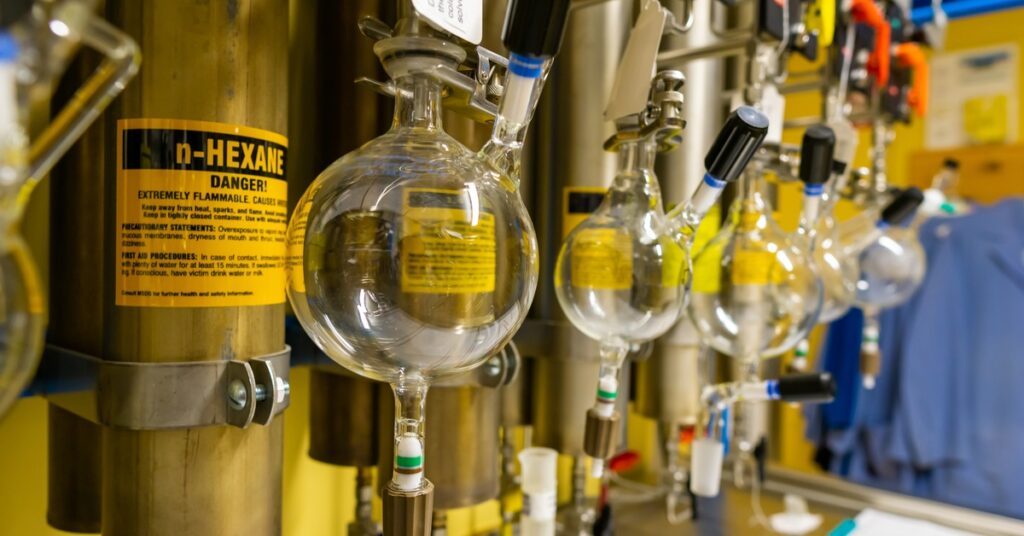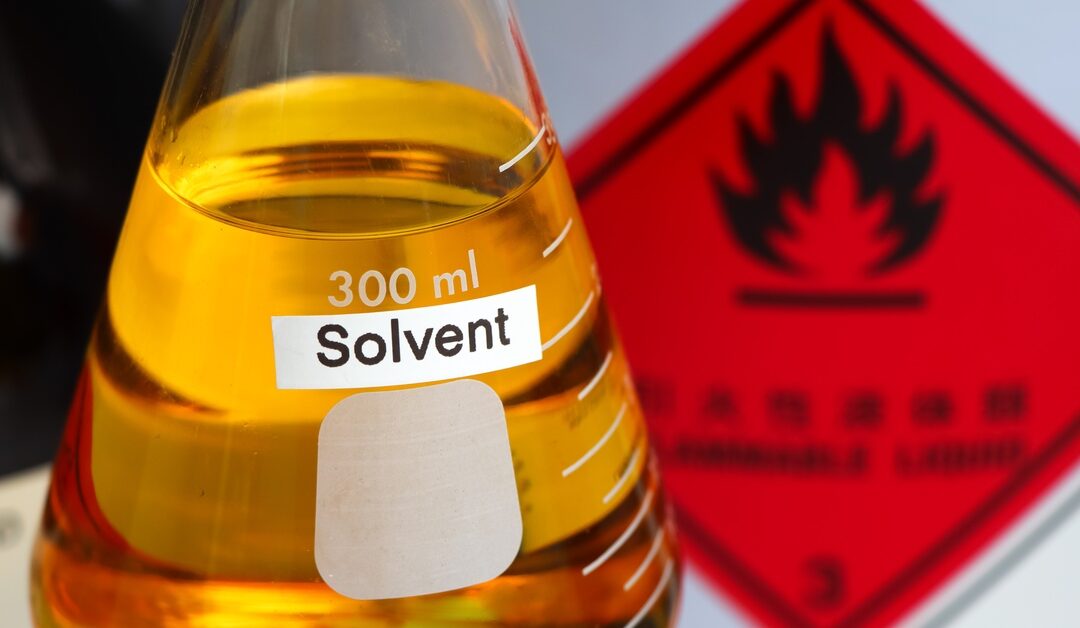Manufacturers who rely heavily on industrial solvents face mounting pressure to reduce waste and improve sustainability. Recovery systems now represent more than just a cost-saving upgrade—they shape how environmental managers meet compliance, avoid fines, and streamline production.
As industry expectations rise, solvent recycling has shifted from a niche solution to an operational standard across paint shops, composite facilities, and high-output manufacturers. Regulatory pressure, machine performance, and financial data all reveal where recovery is heading next.
Regulatory Shifts in Hazardous Waste Management
New environmental rules continue to push solvent-heavy industries toward on-site recovery instead of off-site disposal. Multiple states now update generator thresholds that categorize businesses more aggressively based on waste volume and transport habits. Facilities that haul drums off-site face escalating fees, new documentation layers, and higher classification under EPA regulations.
Because of this shift, on-site systems help companies stay below generator status by reprocessing solvents internally before classification occurs. Recovery reduces total disposal volume, lowers reporting burdens, and limits external handling of regulated material. As a result, environmental managers report fewer violations, quicker audits, and more consistent tracking.
State-level mandates now include recovery incentives for manufacturers that reclaim solvents instead of contracting third-party waste handlers. Some states have introduced grant programs or disposal exemptions for operations using compliant distillation systems. Compliance pressure and policy upgrades define the trends and predictions for the future of solvent recycling, where recovery becomes standard practice across regulated industries.
Advancements in Equipment

Modern solvent recycling machines no longer resemble the labor-intensive systems common just a few years ago. Compact designs now offer automatic shutoff, digital temperature monitoring, and modular drums that reduce operator contact. Plants dealing with multiple solvent types gain speed and safety from improved thermal control and faster recovery cycles.
Technicians also report less maintenance and fewer service interruptions due to rugged parts, sealed chambers, and simplified operator protocols. Many systems now use single-button startup or programmable logic, which reduces human error across shifts. The switch to automation protects throughput and keeps line production stable across variable skill levels.
Unlike many industrial upgrades, newer solvent recovery machines often operate with zero moving parts. Advanced design eliminates wear points, prevents vibration-related failure, and drastically reduces maintenance costs over a 10- to 20-year window. System uptime improves, even as solvent use intensifies across busy facilities.
At Solvent Waste Management, we provide professional solvent recycling machines engineered for long-term reliability, high-volume performance, and simplicity. Manufacturers trust our Texas-made systems because they install easily, perform consistently, and reduce liability through design alone.
Industry Adoption Across High-Use Sectors
Industries that once resisted solvent recovery now consider it a required part of their operating model. Boat manufacturers, synthetic countertop fabricators, and large-scale paint operations now build recovery systems into both new builds and retrofits. If you deal with solvent volumes over three drums per month, then you could recover your ROI in under 12 months.
Buyers in cabinetry and composites increasingly compare solvent recovery options during the project planning phase. Plant engineers and compliance managers evaluate recovery as part of equipment RFPs instead of waiting for fines or incidents. Long-term savings, waste reduction, and simplified compliance drive those early-stage decisions.
Clients often land on domestic suppliers after weighing the service limitations of overseas brands. Recovery systems must perform flawlessly under EPA scrutiny and industrial conditions—making US-built, US-supported equipment the preferred choice. Businesses prioritize uptime, warranty access, and local repair timelines as strongly as price.
Rising adoption marks one of the most visible trends and predictions for the future of solvent recycling, as more industries integrate solvent recovery into their primary workflows.
Economic and Supply Chain Impacts of Domestic Manufacturing
Solvent recovery equipment made in the United States provides an edge in both performance and procurement confidence. Buyers avoid long customs delays, confusing import rules, and hard-to-reach technical support by purchasing from domestic manufacturers. Shorter delivery lead times and warranty support provide both speed and credibility.
More importantly, manufacturers gain full access to replacement parts, upgrade kits, and technical support without depending on third-party distributors. Availability means smoother service, especially for facilities operating with lean maintenance departments. Domestic manufacturing also reflects higher safety standards and better documentation for audits and insurance.
Plants that install solvent recovery systems reduce dependency on unstable solvent supply chains or unpredictable hauler schedules. Instead of waiting for solvent deliveries or disposal pickups, teams manage solvent in-house and on their own timeline. These shifts add resilience to scheduling and production in high-demand seasons.
Data Visibility and Digital Integration in Solvent Recovery

Facilities increasingly demand data-driven systems to streamline reporting, justify budgets, and verify performance. New solvent recovery machines now provide automated run logs, batch records, and fault tracking to simplify compliance documentation. Managers can then export data directly into audit reports, procurement justifications, or ESG statements.
Technicians rely on digital readouts to spot trends in recovery volume, downtime, or solvent loss. Real-time insight helps plants adjust processes without waiting for waste reports from haulers or disposal vendors. More importantly, it creates accountability inside operations where solvent use continues to climb.
Facilities also integrate solvent recovery data into broader performance dashboards alongside energy usage, scrap rates, and OEE metrics. Cross-data view improves capital planning and strengthens internal proposals for sustainability investment. Over time, recovered solvent trends help teams forecast costs and production bottlenecks with greater accuracy.
By aligning with modern plant controls, solvent recovery shifts from an isolated process to an active contributor to plant performance. Facilities adopting digital-ready systems reduce compliance friction while gaining more internal control over quality and cost.
Preparing for ESG and Sustainability Certification Pressure
Corporate sustainability programs now influence how manufacturers select and report solvent use, recovery, and disposal. Many buyers—especially from the federal sector or Fortune 500—screen vendors based on ESG metrics that favor in-house recovery and verified waste reduction. That evaluation often affects contracts, supply chain standing, and renewal opportunities.
Solvent recovery also plays a role in achieving third-party certifications like ISO 14001 or Green Business standards. Auditors look favorably on solvent control measures, solvent reuse cycles, and documented recovery efficiency over time. Equipment supporting tracking offers a competitive advantage during evaluation cycles.
Manufacturers that invest in solvent recovery early gain first-mover status in their category’s sustainability profile. Leadership not only improves external brand perception but also reduces internal risk from late-stage compliance panic. Recovery systems operate as a proactive investment rather than a reactive retrofit.
Stakeholders from legal, compliance, and sales departments increasingly view solvent recovery as a brand and operational asset. Companies that wait until mandates arrive may miss long-term savings, eligibility for key contracts, or certification opportunities already available to early adopters.
Stay Ahead of Trends With Solvent Waste Management
Solvent recovery has evolved into a business-critical capability across multiple manufacturing sectors. Technological improvements, regulatory momentum, and financial pressure now intersect in ways that reward smart early investment.
Manufacturers who act now protect compliance, reduce waste, and gain long-term control over solvent usage and reporting. At Solvent Waste Management, we provide and support professional solvent recycling systems that give operations the performance edge they need—domestically, reliably, and with confidence.

